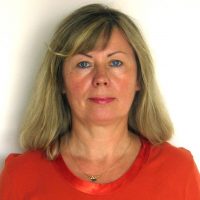Training program

„Moją misją jest wspieranie i wspomaganie w trudnym procesie rehabilitacyjnym związanym z odzyskiwaniem utraconych funkcji na skutek wad genetycznych, zaburzeń układu nerwowego oraz uszkodzeń i urazów po wypadkach.”
~ Anna Regner
Author’s training program
The training is led by Ph. D. Anna Regner – Academic teacher, Speech therapist
International therapist based on neurophysiological methods:
- Castillo Morales
- Cranio sacral (TCS)
- Sensory Inegration (SI)
- Orofacial pain relief techniques
- Peter Walker’s baby massage
Module 1. – Sensomotor therapy and correction of orofacial dysfunction.
Orofaciale therapy is a training focused on neurosensomotor developmental therapy of the whole body, with particular emphasis on the orofacial area.
Training program – Module 1.
Objectives: Practical skills in using manual techniques to correct facial features and reduce pain.
Theoretical part:
- Presentation of general goals of orofacial therapy
- Discuss basic issues related to the bone, muscle and nervous system of the orofacial
Practical part:
- Manual techniques to regulate the muscle tension of the whole body (use of rhythmical movements and vibration).
- Sensory integration of basic senses affecting facial and facial features.
- Selected breathing exercises that regulate the inspiratory and expiratory phases.
- Exercise of selected techniques to correct swallowing, suction, chewing and chewing dysfunctions.
- Muscle tension regulation in the temporomandibular joints – manual exercises (opening and clousing mouth).
- The hand and foot training that improve the functioning of the orofacial area.
Module 2. – Oralfacial manipulation and pain reduce techniques.
Training program – Module 2.
Objective: Practical skills in using manual techniques to correct facial features and reduce pain.
Practical:
- Reminder of anatomical bases of the face and skull (bone, muscular, nervous).
- Manual techniques used in orofacial therapy.
- Stimulation of Impaired cranial nerve function.
- Adjustment of the dysfunction between the bones of the face.
- The facial muscles massage.
- Explanation and proper localization speech organs like proper tongue position (keep the tongue back, vertical position, lateral position).
- Support the orofacial functions of eating, drinking, reduce drooling.
- Mobilisation of mandible- lateralisation, protrusion, closing and opening mouth. Jaw control – correct, symmetrical alignment of Lower and Upper jaw.
- Intraoral exercises (inside the mouth)- gums, hard and soft palate activation.
- Selected techniques for reduce pain in the orofacial area.